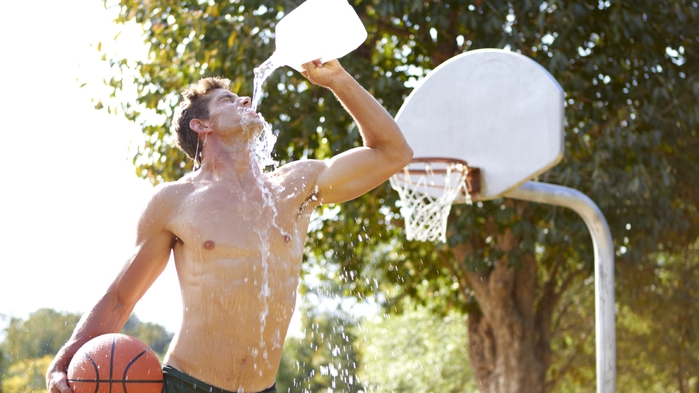Staying properly hydrated is essential, especially as summer temperatures continue to rise. But can having too much of a good thing be that serious?
The answer is yes, according to certified family nurse practitioner Janis Puglisi of Novant Health Pfafftown Family Medicine in Pfafftown, North Carolina.
Overhydration, or water intoxication, is rare, but it can occur when someone drinks too much fluid too quickly, causing a condition called hyponatremia in which the level of sodium in the bloodstream drops to dangerously low levels.
“Overhydration happens when someone has inappropriately high fluid intake, which is sometimes paired with inappropriate fluid excretion,” Puglisi said. “This could happen when someone drinks too much on purpose, or has a hormonal issue that affects fluid losses or thirst, or maybe has a heart, liver or kidney issue that affects water retention within the body.”
Symptoms of hyponatremia include headache, fatigue, muscle cramps, nausea and vomiting. Eventually, because the amounts of sodium and fluid are altered in the brain, Puglisi said seizures, unconsciousness and coma can occur. In rare cases, the condition can be fatal.
How much water is enough?
Water makes up more than 65 percent of an adult male’s body weight, 50 percent of an adult female’s body weight and about 73 percent of a newborn’s body weight. Puglisi noted there is some misinformation about how much water intake is necessary to remain adequately hydrated.
“The old adage of eight glasses of water has no true scientific basis,” she said. “In fact, research has concluded that healthy adults who don’t do a lot of exercising and live in a temperate climate like North Carolina typically didn’t need large amounts of solely water.”
Keep in mind that some foods also count toward you total tally. Experts agree that women need 11 cups of fluid per day and men need 15 cups, but don’t try to drink it all at once, Puglisi warned. It’s best to spread your water intake throughout the day.
Research suggests that roughly 20 percent of the average person’s daily fluid intake comes from fruits, vegetables and other solid foods, she said. In fact, cucumber, iceberg lettuce, celery, tomatoes, broccoli, bell pepper, cauliflower, spinach, strawberries and watermelon all have water content of over 90 percent, Puglisi said.
When to hydrate
Paying attention to your thirst is your first line of defense when it comes to staying hydrated, but there are times when you’ll want to take extra precautions to make sure your body is getting the fluid it needs.
“Hydrating two hours before physically demanding outdoor activities or sports activities during hot days is important,” Puglisi said. “A typical 165-pound athlete needs about 15 ounces of fluid to start and then should continue drinking every 15 to 20 minutes during the activity.”
If you experience heat exhaustion and become dehydrated, sports drinks containing sodium and potassium will help to balance the body’s electrolytes. Surprisingly, a recent study showed that milk-based drinks are more effective than sports drinks for rehydration. Athletes who drank milk following exercise had less need for intravenous fluids and experienced decreased nausea, vomiting and frequency of their diarrhea.
Puglisi also reminds her patients to stay away from alcohol or sugary drinks on very hot days, which actually cause a person to lose body fluid. Also, while a glass of water full of ice might sound like the perfect beverage after a long day in the sun, it’s best to avoid very cold drinks, as they may induce stomach cramps.
According to the Centers for Disease Control and Prevention , some of the safest ways to stay cool on a hot day include:
- Limit outdoor activities to morning and evening hours.
- When you exercise, drink two to four glasses of cool, nonalcoholic fluids each hour.
- Rest often in shady areas.
- Wear lightweight, light-colored and loose-fitting clothing.
- Protect yourself from the sun by wearing a wide-brimmed hat, sunglasses and broad spectrum sunscreen. The American Academy of Dermatology recommends using SPF 30 or higher.




